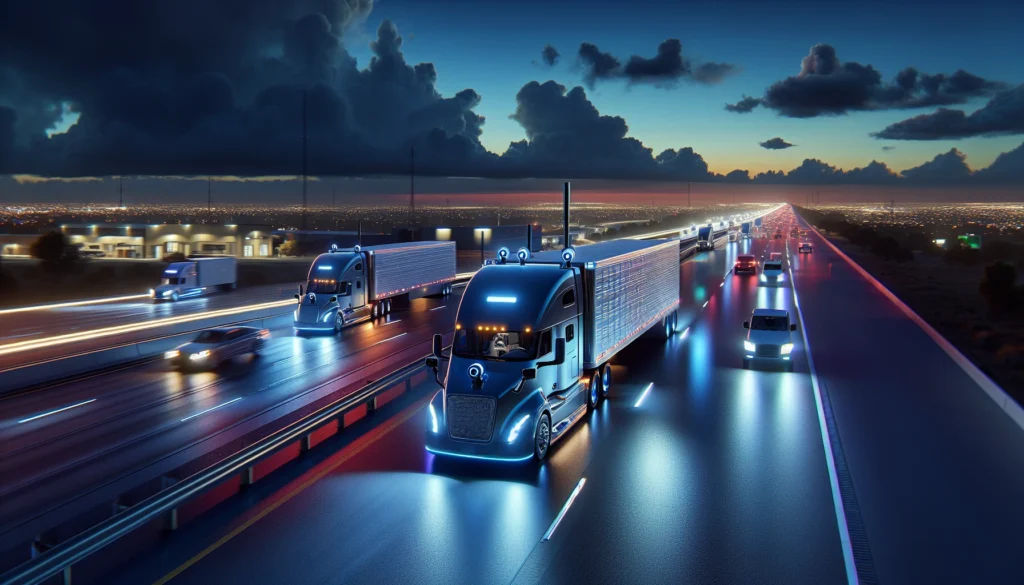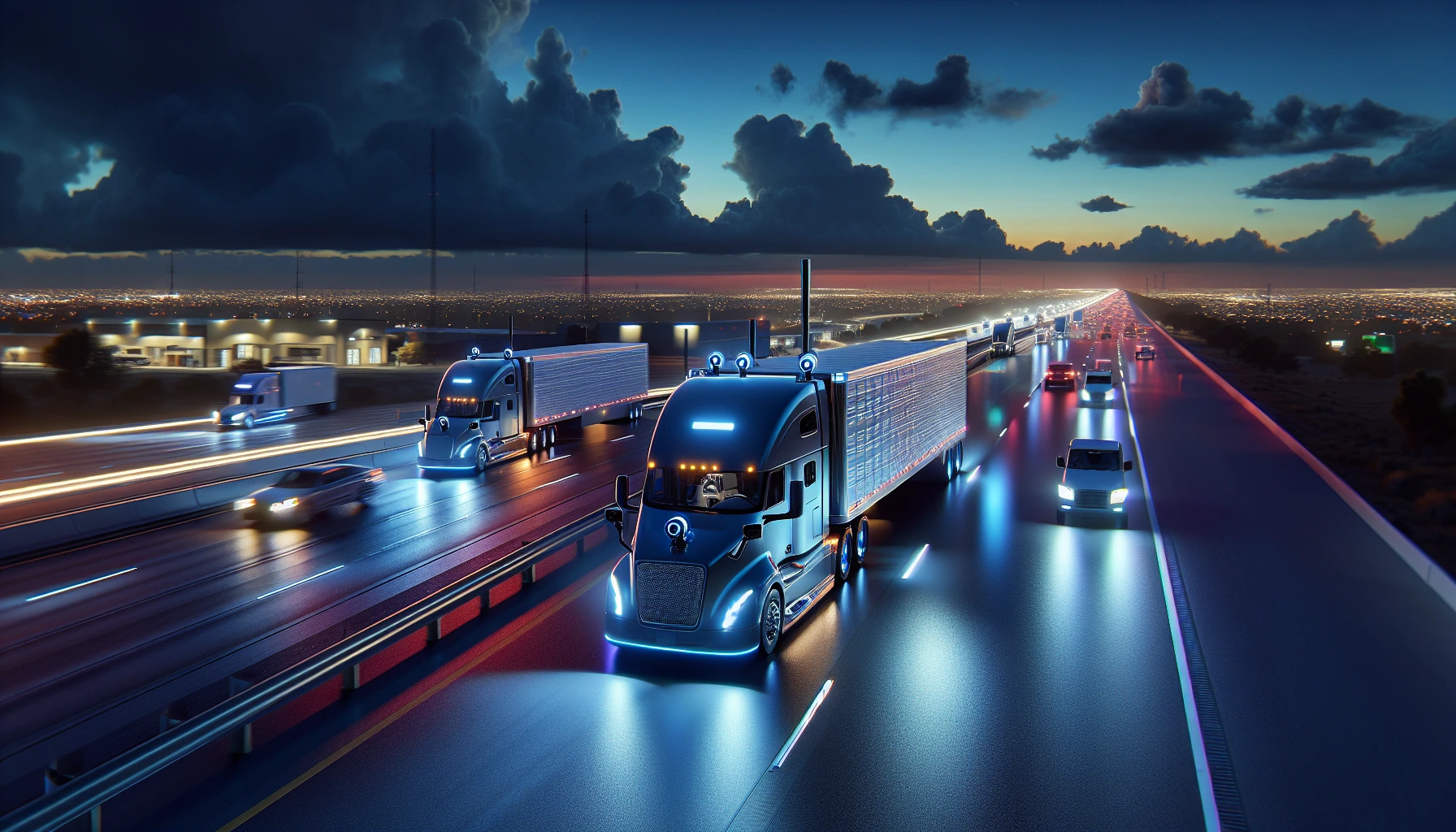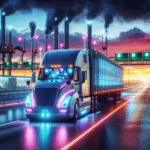Baseline Reality Check
Everything you touched today rode on a truck. That’s not poetic—it’s the backbone of American prosperity. Yet we’re short roughly 80,000 drivers (projected to double by 2030), and logistics costs climbed from 7.5% to 8.7% of GDP between 2020 and 2023. When freight gets slower and pricier, the whole economy pays. Autonomy isn’t a toy for tech demos—it’s the most fiscally responsible lever we have to bend those curves.
Not Hype—Hard Numbers
By 2035, only about 13% of U.S. trucks need to be autonomous to represent a $178B market. Globally, the sector is projected at $616B ($327B China, $178B U.S., $112B Europe). This isn’t speculative froth; it’s an industrial upgrade cycle hiding in plain sight. The country that scales this first gets the compounding benefits—faster turns, lower costs, tighter working capital, and a resilient supply chain.
Safety Is the Business Case
Ninety percent of truck accidents involve human error. Full autonomy at scale could trim roughly $36B annually in accident-related costs. Fewer crashes means less downtime, lower insurance, steadier delivery windows, and less volatility for shippers. If you care about fiscal discipline, you go where the avoidable losses are. This is that line item.
Automate your tasks by building your own AI powered Workflows.
Utilization Is the Killer Feature
Although human drivers cap around 11 hours a day. Comparatively autonomous rigs can run near 24/7, pushing asset utilization into a different orbit. That doesn’t eliminate people; it reassigns them. Long-haul goes autonomous; humans take higher-quality local routes, while new roles in remote operations, fleet monitoring, maintenance, and logistics coordination grow. We’ve seen this movie since ATMs: technology changes the job mix and expands throughput.
Proof on the Ground, Not in a Slide Deck
In Texas, driverless freight already runs overnight between major metros, with systems detecting obstacles from three football fields away. Additionally one fleet logged 20,000+ driverless miles in just months. Arizona and New Mexico are following with clear, consistent rules. Meanwhile, California’s regulatory knot is exporting both investment and know-how. The pattern is familiar: states that streamline win; states that stall become case studies.
Competing with Beijing Means Competing on Highways
China isn’t waiting. Comparatively autonomous freight systems operate across about 85% of its highways, serving the biggest logistics providers and global brands. If we fail to scale, we don’t just lose a tech race—we lose a strategic industry and the geopolitical leverage that comes with it. Industrial policy doesn’t always mean subsidies; sometimes it’s as simple as regulatory clarity and getting out of the way of builders.
A Conservative Upgrade to the Real Economy
Autonomy trims waste, compounds safety, and accelerates inventory turns—without a blank-check program. Basically it’s targeted modernization for a foundational sector. Do the math: despite fewer empty miles, steadier schedules, less fuel burned in stop-start congestion, safer corridors, and a healthier small-carrier ecosystem plugging into autonomous lanes.
Made in the USA, Delivered at Speed
Finally we don’t need 100% autonomy to see the upside; 13% penetration unlocks meaningful gains. The goal isn’t sci‑fi—it’s reliability, cost control, and national competitiveness. When the next disruption hits, the resilient economy is the one that can still move product overnight, safely and cheaply. That’s the fact.

AI Related Articles
- The Quiet Freight Arms Race: Why U.S. Prosperity Rides on Autonomous Trucks
- AI’s Default Chatbot: ChatGPT’s 80% Grip and Copilot’s Distribution-Driven Ascent
- AI Stethoscope Doubles Diagnoses in 15 Seconds—The Hard Part Is Deployment
- AI Video Turns 20 Minutes of Reality into Deployable Humanoids
- Automated UGC, Manual ROI: The Next Ad Arbitrage
- Job Loss: Pilots Are Over, AI Agents Just Hit the Payroll—and the Pink Slips
- Build the AI Control Tower: Turn Supply Chain Chaos into Margin
- Nuclear Command at Machine Speed: The Flash Crash Risk We’re Not Pricing In
- Autonomous Interstates by 2027: The Route Changes, Not the Role
- AI Will Lower Healthcare Costs by Deleting Admin Waste—Not by Finding More Diagnoses
- Microsoft Warns About AI Job Risk—But It’s Your Task List That’s Replaceable
- Stop Shipping AI Demos: Win With AgentOps, Not Agent Model Hype
- Generative Ransomware Is Here—Your Security Playbook Just Changed
- The Next Breakthrough in ChatGPT Isn’t Smarts—it’s Saying “I Don’t Know”
- Stop Chasing Apps: Build a Personal AI Student OS


















